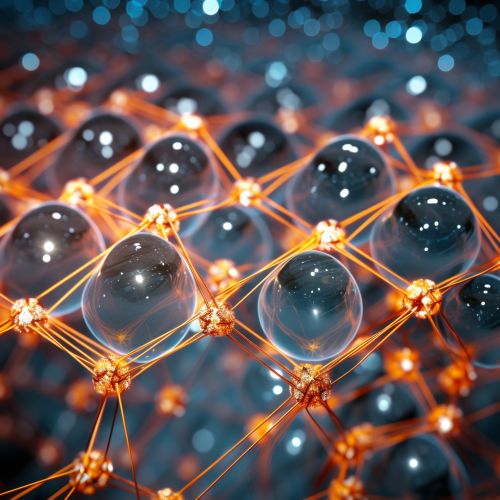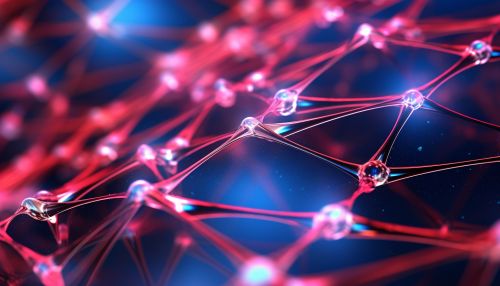Quasiparticle
Introduction
A Quasiparticle is a disturbance, in a medium, that behaves as a particle. This concept is used in several fields of science, including solid-state physics, condensed matter physics, and particle physics. Quasiparticles are particularly important in the study of systems that are not easily described in terms of elementary particles—systems such as superfluids and solids. In these systems, the interactions between the many constituents can make it essentially impossible to describe the properties of the system in terms of the individual particles. The quasiparticle concept is a way to simplify the description of such systems.


Definition and Properties
In the simplest terms, a quasiparticle is a packet of energy and momentum that moves through a medium. This packet of energy and momentum is not necessarily tied to a single particle—it can be distributed among many particles. In this sense, a quasiparticle can be thought of as a "collective" mode.
Quasiparticles are characterized by certain properties, such as energy, momentum, and charge, which can be defined and measured. These properties are often similar to those of elementary particles. For example, a quasiparticle can have a charge, just like an electron or a proton. However, the charge of a quasiparticle is not necessarily an integer multiple of the elementary charge—it can be a fraction of the elementary charge.
Types of Quasiparticles
There are many types of quasiparticles, each with its own unique properties and behaviors. Some of the most well-known types of quasiparticles include:
Phonons
Phonons are quasiparticles associated with the vibrations of atoms in a solid. They are a quantization of the elastic vibrations of the crystal lattice in a solid. Phonons play a key role in many physical phenomena, such as thermal conductivity and superconductivity.
Excitons
Excitons are quasiparticles that consist of an electron and a hole (a missing electron) in a solid. They are formed when a photon with enough energy is absorbed by a semiconductor. Excitons play a crucial role in the operation of solar cells and light-emitting diodes (LEDs).
Polarons
Polarons are quasiparticles formed by an electron and its associated polarization field in a solid. The polarization field is the distortion of the ion lattice caused by the presence of the electron. Polarons play a significant role in the transport properties of many solids.
Magnons
Magnons are quasiparticles associated with the collective excitation of the electron spins in a magnetic material. They are a quantization of the spin waves in a magnetic material. Magnons play a key role in the magnetic properties of materials.
Anyons
Anyons are quasiparticles that occur only in two-dimensional systems. They have the unique property that their quantum statistics are neither bosonic nor fermionic. Anyons are of great interest in the field of quantum computing.
Role in Condensed Matter Physics
Quasiparticles play a central role in condensed matter physics, the branch of physics that deals with the physical properties of condensed phases of matter. In these phases, the interactions between the many constituents are strong, and the behavior of the system cannot be described in terms of the individual particles. The quasiparticle concept is a powerful tool that allows physicists to simplify the description of these complex systems.
For example, in the theory of superconductivity, the key players are not the individual electrons but quasiparticles known as Cooper pairs. These are pairs of electrons that move through the superconductor as a single entity, without scattering off impurities or lattice vibrations. This lack of scattering is what allows superconductors to carry electrical current without resistance.
Role in Quantum Computing
Quasiparticles are also of great interest in the field of quantum computing. In particular, anyons, which occur only in two-dimensional systems, are the basis for a type of quantum computing known as topological quantum computing.
In a topological quantum computer, information is stored in the braiding patterns of anyons. Because these braiding patterns are topological in nature—that is, they depend only on the overall shape of the braid, not on the details of the paths of the anyons—the information is highly resistant to errors. This makes topological quantum computing a promising approach for the construction of a practical quantum computer.
